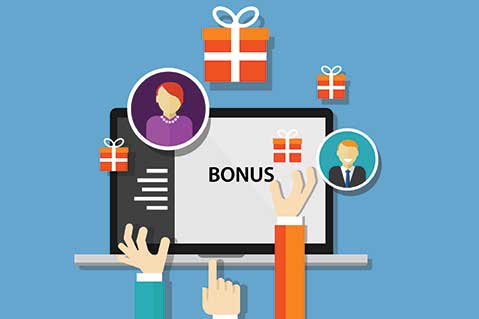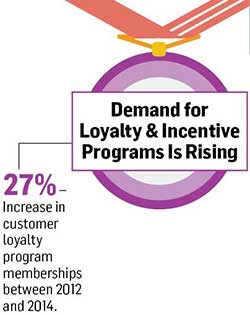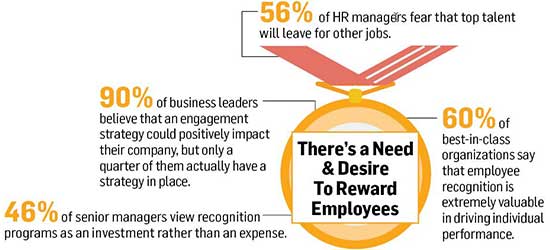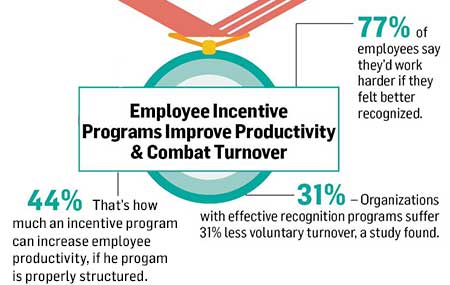October 25, 2016
How to Introduce Incentive Programs to a Client’s Sales Force
What you need to know in order to create and facilitate an effective incentive program for your client’s sales force.
Corporate incentive programs overall have grown as an industry from $77 billion three years ago to $90 billion this year, according to the Incentive Federation. So, companies are clearly doing everything they can to motivate their employees to increase and improve their performance.

Nowhere is this more prevalent than in sales departments, where goals are always increasing and the pressure to produce is rampant. To reach those lofty measures, companies implement elaborate sales incentive programs to motivate their sales reps.
And, that’s where promotional products distributors can increase their business. These clients are looking for product ideas and ways to manage the programs. Here’s a straightforward guide to building the perfect sales incentive program for current and prospective clients.
Identify Decision Makers:
“Anyone that thinks about selling a program first has to determine what level of complexity and size of program they are capable of handling without any problem,” Emmer says. “Then, figuring out what businesses fall into the parameters you set for yourself, you can pitch within your comfort zone. For ‘canned’ programs from a vendor or basic programs you structure and build yourself, the owner or senior administrator is the likely contact. For larger programs, you most likely will be working with the senior sales official and marketing head, and maybe even HR.”
Quiz Your Client:
There is no such thing as a one-size-fits-all sales incentive program. As such, Emmer says distributors must have a list of questions ready before going forward. Those questions include:

• Who within the organization will run the program? (“Will the client run things and simply send you the list of redemptions when the program ends, or will you need to monitor and report on everything?”)
• What kind of regular contact will be required? (“Will participants be in direct contact with you, or will they communicate with people at the sponsoring company?”)
•Will inventory be required?
• Will online ordering/redemption be required?
• Will points be available to purchase to move up to a desired item?
“The list of variables in endless. So, establishing what the client wants will determine what program and additional support will be needed,” Emmer says.
Personalized Programs:
If you’re going to help operate and run a sales incentive program for clients, program management software can be vital.
Distributor firm Shumsky (asi/326300), for example, which has its own incentive program software, recently launched Ignite, an SAS platform designed for midsized companies and operates as an internal social media network that’s tailor-made to their clients’ sales teams.
“It’s kind of like Facebook, but it’s for the company, and it could be specific to just the sales department,” says Shumsky chairman Mike Emoff. “Salespeople can have challenges that are set up by the sales manager or the team leadership, and as they meet their challenges, they can earn badges or points, and those points can be converted into gifts. We bill employers per employee per month to participate, so it’s just like an app on your phone that you pay monthly for.”
Shumsky CEO Anita Emoff says program supervisors can create short- and long-term challenges specific to that company’s sales goals. “Whether it’s top-line revenue, bottom-line revenue, new customers – they can specifically drive those challenges,” she says.
Ignite’s internal social media component gives users the ability to share their accomplishments within the group, such as “badges” earned for meeting a goal, and it allows others to “like” or comment on that achievement, which encourages competition and transparency within the sales force.

“You can see in real time how you’re doing against your objectives and how you’re doing against the team,” Anita Emoff says. “It creates that competitive advantage and it creates visibility. It becomes the central platform for any kind of communication and wins within the organization.”
This kind of platform is especially appealing to – but not necessarily limited to – millennials, she says.
“The profiles are generated just like Facebook and LinkedIn where you can share details about yourself and see what badges you collected, so it’s very personal,” she says. “It’s not just about, ‘do this and get that’; it’s about collaborative communication and collaborative engagement.”
More Power:
Preferred sales rewards vary by gender, generation and income, but Emmer says there seems to be at least one particular type of item that’s attractive to sales reps across the board.
He says “power” products have emerged as an industry standard.
“The small chargers for smartphones, tablets and the like are prolific,” he says. “As people have become more educated on the benefits of buying better, certified devices and the danger with the cheap items, they have become a mainstream product.
“Along this line, automotive power and safety has really kicked up, too. High-power units that can jumpstart a car and fit in the glove box were hot items last year, and I expect them to continue this next year. Larger power units with other features like compressors and work lights make impressive premiums.”
Emmer says electronics should continue to trend up. “More active lifestyle merchandise and electronic accessories are stronger now,” he says.

Digital Rewards:
Emoff says digital rewards have been a hit for him when setting up programs for millennial sales reps. Music and book downloads through Amazon, for example, have been popular, along with digital Visa gift cards.
Why? Because recipients know the exact value of what they’re getting, and they can be used anywhere in the world.
“We’re finding a marketplace desiring that cash or some equivalent of cash,” Emoff says. “For millennials specifically, they want to take the points and they want to download music or a book.
“We’re integrated, for example, with Amazon Audible, so you can digitally download books instantly and you can use your (rewards) points to do that. You can be anywhere in the world to do that, which is another reason (they’re popular): a much broader scope of delivery. You don’t have the cost of delivery; everything is automated. It’s where the world’s going.”
Merchandise, though, is also proven to be an extremely effective driver of performance – especially for salespeople. In fact, Emmer says merchandise “is much more effective at reaching goals, which has been illustrated in every study I have ever seen and the programs I have worked to help structure,” he says.
